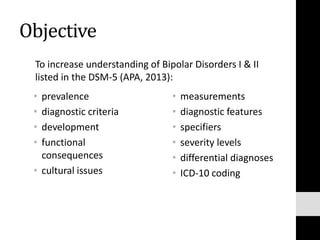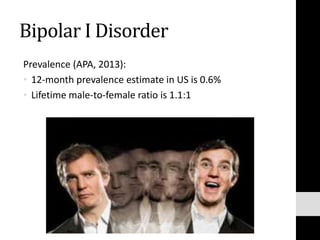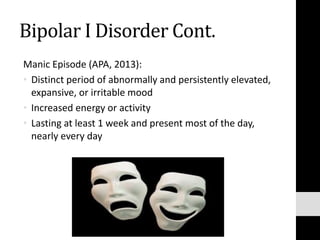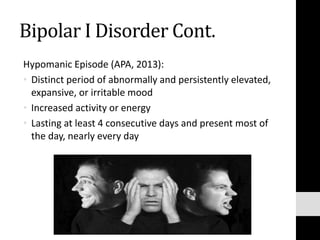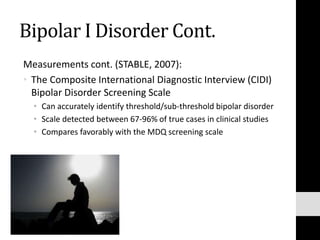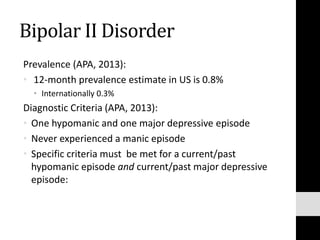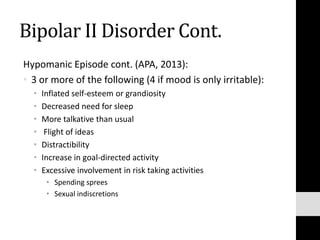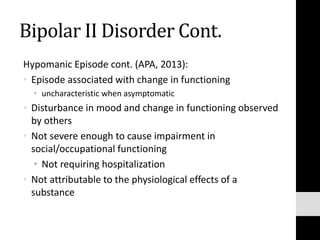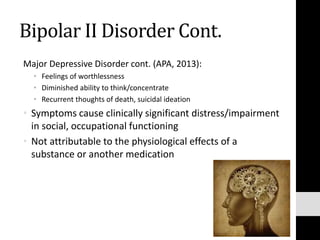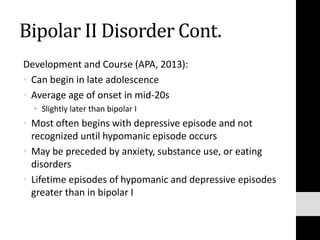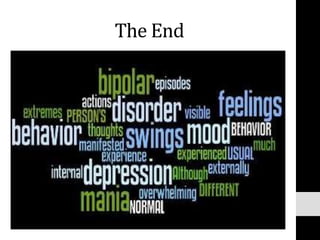This document discusses Bipolar Disorders I and II as defined by the DSM-5. Bipolar I Disorder requires at least one manic episode, along with potential hypomanic or depressive episodes. Diagnostic criteria for manic, hypomanic, and depressive episodes are provided. Bipolar II Disorder involves at least one hypomanic and one depressive episode, without mania. It further defines hypomanic and depressive episode criteria and discusses the development, course, and age of onset for both disorders.

